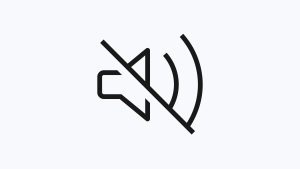Home > ATEX information
ATEX information
In environments where there is a risk of explosion, it is essential to use equipment that meets strict safety standards. ATEX is the European directive for explosive atmospheres and sets requirements for both electrical and mechanical equipment, including fans. On this page, we explain what ATEX means, in which situations this standard applies, and what to consider when selecting an ATEX-certified fan. This way, we help you make the right choices for a safe working environment.
Explosion hazards and zones: What ATEX means
The ATEX directives apply to all locations where there is a risk of explosion. The directives have a broad scope and cover both gas explosion hazards and dust explosion hazards. The term ATEX is derived from the French term ‘ATmosphère EXplosible’.
The ATEX Directive 2014/34/EU provides regulations concerning products (such as ATEX fans) used in hazardous explosive environments. The different environments are divided into three zones. Each zone requires a specific ATEX certification:
• Gas zones 0, 1, and 2
• Dust zones 20, 21, and 22
Marking related to the safety level
Explosion-proof equipment can only be used in hazardous explosive environments if it is correctly marked. The nameplate of the ATEX fan always features a clearly legible marking indicating the safety level. This marking is structured as follows:
Example: II 2G Ex de IIC T4
- II = Equipment group II (above-ground installation)
- 2 = Category 2 (for gas, this corresponds to zone 1)
- Ex = Explosion-proof
- de = Type of protection
- IIC = Gas group IIC
- T4 = Temperature class
Equipment groups and categories
There are currently two equipment groups:
• Equipment group I covers all underground (mining) installations.
• Equipment group II covers all other above-ground installations.
Equipment group II is divided into three gas groups. The distinction is primarily based on the MESG (Maximum Experimental Safety Gap) for flameproof enclosures and the MIE (Minimum Ignition Energy) for intrinsically safe circuits.
Representative gases or vapors of liquids include:
| Group | Characteristic | Representative Material |
|---|---|---|
| I | Mine gas = 210 μJ | Methane |
| IIA | Ignition energy > 200 μJ | Propane, Butane, Kerosene |
| IIB | Ignition energy 60–200 μJ | Ethylene, Hydrogen Sulfide, Diethyl Ether |
| IIC | Ignition energy 20–60 μJ | Hydrogen, Acetylene, Carbon Disulfide |
As more EN (European Norms) standards are based on IEC (International Norms), Europe is also adopting new dust groups (III). These are divided into IIIA, IIIB, and IIIC. The division is characterized as follows:
| Group | Characteristic | Representative Material |
|---|---|---|
| IIIA | Fibres and flakes > 0.5 mm | Tobacco, Coarse Sawdust |
| IIIB | Electrically non-conductive < 0.5 mm | Milk Powder |
| IIIC | Electrically conductive < 0.5 mm | Graphite Powder |
Zone classification
To determine the necessary measures for avoiding ignition sources, hazardous areas must be classified into zones based on the frequency and duration of the presence of explosive gases or dust.
| Zone | Description | Presence per Year |
|---|---|---|
| Zone 0 or 20 | Gas or dust continuously present | More than 1000 hours per year |
| Zone 1 or 21 | Gas or dust likely to be present occasionally | Between 10 and 1000 hours per year |
| Zone 2 or 22 | Gas or dust present only for short periods | Less than 10 hours per year |
In the various zones, only equipment from a specific category is permitted. For example, electric motors are not allowed in zone 0 or zone 20.
| Zone | Equipment Marking | Protection/Features |
|---|---|---|
| Zone 1 | II 2G | Exn(A), Exe, Exd(e), Exd |
| Zone 2 | II 3G | Exe, Exd(e), Exd |
| Zone 21 | II 2D | IP65, PTC |
| Zone 22 | II 3D | IP55, IP65, Non-conductive dust, Conductive dust |
Types of protection
Various methods of protection against ignition are possible. Below are the most common types of protection for gas explosion safety:
- Ex d – Flameproof Enclosure
Type Ex d consists of a flameproof enclosure containing components that could spark or generate high temperatures during normal use. - Ex e – Increased Safety
Type Ex e is only applicable to equipment that does not produce sparks during normal use. - Ex p – Pressurization (Internal Overpressure)
Type Ex p involves placing equipment that can spark or generate heat in a housing with internal overpressure. - Ex i – Intrinsic Safety
Type Ex i ensures that the energy in the circuit is too low to ignite the explosive atmosphere. - Ex n – Non-sparking (only for category 3G, zone 2)
nA = non-sparking, nC = enclosed design, nR = restricted breathing
Temperature classes and maximum surface temperature
When an ignitable gas mixture or dust cloud comes into contact with an object whose temperature is equal to or higher than the ignition temperature of the combustible gas or dust, ignition can occur. Examples include heating elements, mechanical drives, electric motors, and incandescent lamps.
Gas explosion-proof equipment is classified into temperature groups or “T-classes.” Equipment in a certain temperature class may be used for gases with an ignition temperature higher than the temperature corresponding to that group.
| Classification (EN 50 014) | Ignition Temperature |
|---|---|
| T1 | 450 °C |
| T2 | 300 °C |
| T3 | 200 °C |
| T4 | 135 °C |
| T5 | 100 °C |
| T6 | 85 °C |
Note: T1 falls within the range of T2, etc. T1 is the lowest in order. T6 is therefore the “strictest” classification.
Directives
As of April 20, 2016, ATEX 95 was replaced by ATEX 114 (Directive 2014/34/EU) and ATEX 137 (Directive 1999/92/EC) has been renamed ATEX 153. According to the European Commission, the names ATEX 114 and ATEX 153 are only “informal” designations. The correct legal names are Directive 2014/34/EU and Directive 1999/92/EC.
All new explosion-proof equipment and protective systems must comply with the new directive from April 20, 2016. This primarily affects manufacturers of explosion-proof equipment and systems. For example, explosion-proof equipment complying with ATEX 114 must be marked with the “Ex” symbol in a regular hexagon (no yellow background required). There is increased product surveillance, stricter requirements for importers, and new accreditations for “notified bodies.” For users, it is important to know that existing ATEX 95 certificates remain valid. However, once explosion-proof equipment or systems are modified or renewed, ATEX 114 applies.
The difference between the two directives is that ATEX 114 applies to the manufacturing of installations and products (CE directive), while ATEX 153 focuses on the environment, procedures, and employee instructions (social directive) in explosive environments. The goal of combining these directives is to ensure the safety and health of workers in areas with explosion hazards. Additionally, ATEX 114 facilitates the free movement of goods within the EU for equipment and systems used in these environments.
What is a notified body?
A Notified Body is an independent testing organization designated by the EU to assess and certify explosion-proof products, such as ATEX fans, according to applicable European directives. For products falling under ATEX 2014/34/EU, this assessment is mandatory in certain risk categories.
The product label of an ATEX-certified product always states which organization carried out the testing. This is indicated via a unique identification number linked to the relevant Notified Body. This ensures that the product has been assessed according to the correct procedure and complies with the safety standards for explosive environments.

Need advice? Get in touch!
We’re available Monday to Friday from 8:30 to 17:00.
Frequently asked questions about ATEX
What does ATEX mean exactly?
ATEX stands for “ATmosphère EXplosible” and is the European directive for equipment and protective systems in explosive environments.
When is an ATEX fan required?
An ATEX-certified fan is required in zones where there is a real risk of gas or dust explosions, such as zones 0/20, 1/21, and 2/22, depending on the frequency and duration of the hazard.
What is the difference between ATEX 114 and ATEX 153?
ATEX 114 (2014/34/EU) focuses on equipment and system requirements, while ATEX 153 (1999/92/EC) addresses worker safety in explosive environments.
How do I know if a fan complies with ATEX?
The fan’s nameplate will feature an ATEX marking containing information on explosion safety, zone classification, gas or dust group, temperature class, and the certifying Notified Body.
What is a Notified Body in ATEX certification?
A Notified Body is an accredited testing institution that certifies products according to ATEX directives. Each ATEX product carries a number referring to the relevant body.



